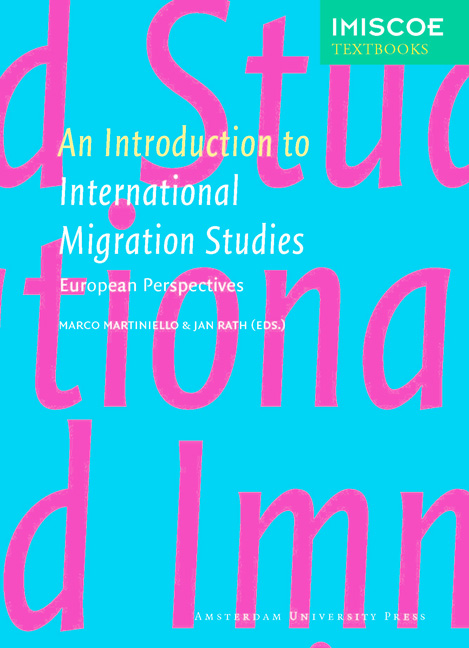1 - An Introduction to International Migration Studies: European Perspectives
Published online by Cambridge University Press: 14 January 2021
Summary
The vast majority of the world's citizens (some 97 per cent) never move house beyond their native country's borders. Only three per cent is internationally mobile. That is one out of every 33 persons in the world today. The share of international migrants in the world population has been very stable over the past twenty years, but the absolute number has increased considerably – from an estimated 150 million individuals in 2000 to approximately 214 million in 2010. Much of this rise is due to global population growth. While most migrants stay within their own region of origin, a relatively small number of the ‘huddled masses’ of men and women land in Europe: an estimated 72.1 million in 2010. The share of ‘first generation’ international migrants in Europe in relation to the region's total population rose from 6.9 per cent in 1990 to 9.5 per cent in 2010. This international migration has no doubt changed the face of Europe (Castles and Miller 1999).
Advanced economies in the north-western part of Europe constituted the first migration catchment areas after World War II. Guest workers from Spain and Italy, and later also from other countries in the Mediterranean, gravitated to the manufacturing industries in Germany, France, the Benelux, Nordic countries and Switzerland (Martiniello 2006). Furthermore, millions of people from former colonial areas outside Europe moved to their ‘motherlands’ in the United Kingdom, France and the Netherlands. Those from Spanish and Portuguese colonies followed later, though at a much lower rate. At that time, Southern and Central European countries (but also countries such as Ireland) were predominantly sending countries, insofar as they were involved in international migration at all. More recently, Ireland, Spain, Portugal, Greece, Italy and a number of countries in Central Europe transformed into receiving countries and transit countries. West and north-west Europe now serves as a magnet for hundreds of thousands of newcomers from Latin America (particularly to the Iberian Peninsula), Central and Eastern Europe and beyond. In the meantime, refugees and asylum seekers from war zones all over the world have flocked to Europe hoping to find a safe haven.
- Type
- Chapter
- Information
- An Introduction to International Migration StudiesEuropean Perspectives, pp. 15 - 22Publisher: Amsterdam University PressPrint publication year: 2012



